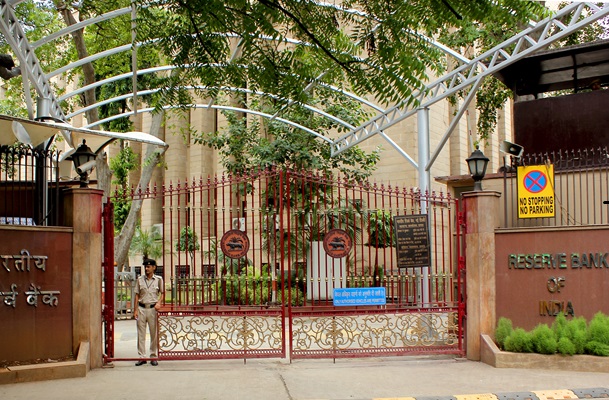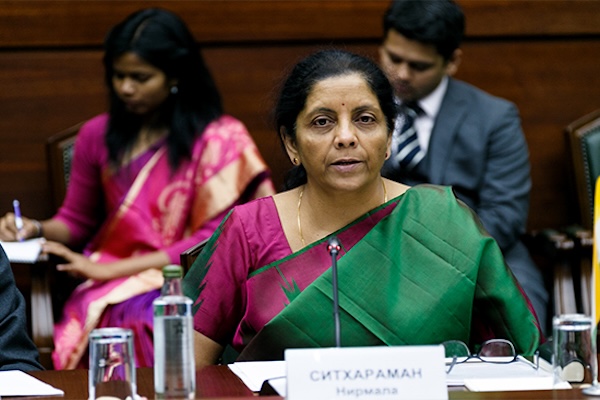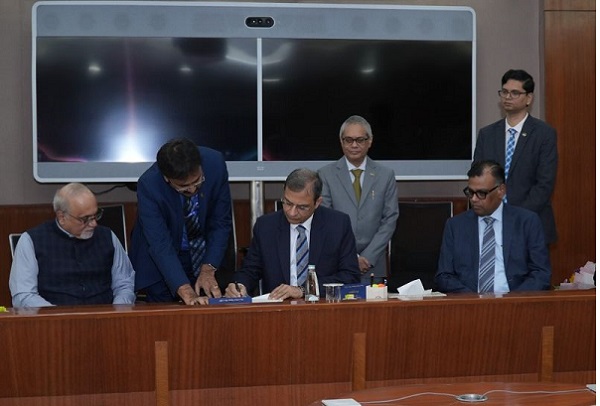.png)

Groupthink is the House View of BasisPoint’s in-house columnists.
February 26, 2025 at 8:10 AM IST
The Reserve Bank of India’s decision to conduct a $10 billion buy-and-sell swap with a three-year tenure is an unusual move, raising questions about its broader objectives. The stated rationale is straightforward—easing interbank liquidity—but the mechanics suggest a deeper strategic play of replenishing foreign exchange reserves.
A spot-forward swap is a well-known tool, yet its use by the RBI in this context warrants closer scrutiny. The central bank will buy dollars now and commit to selling them three years later. This immediately infuses rupee liquidity into the system, potentially easing tight money market conditions. However, whether liquidity infusion is the primary intent or merely a convenient byproduct remains debatable.
For the swap to succeed, the market must supply $10 billion within four working days—a tall ask. Large banks and corporates with significant foreign currency exposure will likely be key participants, some for hedging and others for opportunistic trades.
With global central banks, particularly the US Federal Reserve, keeping markets on the edge, companies may have to reassess hedge tenures. The RBI’s Financial Stability Report noted that a third of external commercial borrowings were unhedged as of September 2024. Even if ECBs are hedged, they could be for short-term liabilities. If firms want to participate in the swap, they may need to cancel short-term hedges and take fresh three-year positions—a calculated risk on future interest rates and currency movements.
If the RBI has gauged the market appetite well, willing counterparties are likely already in place. If not, the swap risks distorting the market. If premiums become volatile, there could be doubts about the effectiveness of the swap as a tool.
The January auction offers some reassurance—the $5 billion swap saw a robust bid-to-cover ratio of five, indicating strong demand.
If the RBI is determined to execute the swap successfully, it may need to set attractive premiums for banks and corporations. A key question is how aggressively the central bank will shape forward premia. It could lower hedging expenses for corporates with offshore liabilities if the RBI signals a willingness to buy the full $10 billion regardless of cost.
The challenge, however, is the widening US-India interest rate spread owing to the fall in US treasury yields. It remains to be seen how much the premiums could fall even if the RBI is keen on gathering $10 billon.
Reserve Accretion
The swap also helps rebuild forex reserves, which have fallen by $70 billion from their peak of $705 billion in September. The central bank has intervened aggressively in recent months to prevent a sharp depreciation in rupee, and this move creates a buffer without directly intervening in the spot market, avoiding unwanted scrutiny from global investors and policymakers.
This ignites an old debate. Former Chief Economic Adviser Arvind Subramanian once argued that RBI’s forex interventions subsidise corporate borrowing costs by facilitating ECBs. If the swap stabilises the rupee and curbs hedging costs, it could lower offshore borrowing costs for Indian firms.
While the central bank has never formally endorsed this view, its actions over the past year suggest a strategic judgment of holding the rupee rock-steady that has irked both market purists and policymakers.
The RBI justified its $10-billion, three-year FX swap as a liquidity infusion measure. However, the central bank has other tools to manage domestic liquidity, while swaps are traditionally used for currency adjustments or forward book management. Their increasing adoption follows their inclusion in the liquidity framework toolkit for managing durable liquidity, a move seen as aligning with evolving market practices.
For now, the market will accept any measures to boost liquidity. India’s liquidity deficit reached ₹1.9 trillion as of February 24, according to RBI’s daily liquidity operations data—a significantly high shortfall. The February 7 repo rate cut, the first in five years, was aimed at easing conditions to support growth, yet transmission remains slow.
While the swap injects rupee liquidity, it is unlikely to signal another rate cut soon. Future rate cuts will hinge more on inflation and growth trends than liquidity conditions alone.
Longer tenure foreign exchange swaps have three objectives: forex reserves, forward premiums, and rupee liquidity. Which of these objectives weighed more? The debate over the RBI’s true motives will continue, but for now, markets will focus on how smoothly the swap is executed, who provides the dollars, and whether it achieves its objective without unsettling the broader currency market.




